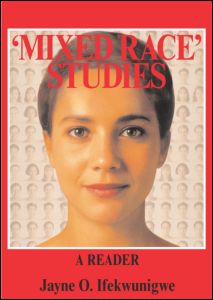The one drop rule & the one hate rule
Dædalus, Winter 2005
David A. Hollinger, Preston Hotchkis Professor of American History
University of California at Berkeley
Two portentous practices within the public discussion of ‘race’ in the United States since the late 1960s are rarely analyzed together. One is the method by which we decide which individuals are ‘black.’ The other is our habit of conflating the mistreatment of blacks with that of nonblack minorities. Both practices compress a great range of phenomena into ostensibly manageable containers. Both function to keep the concept of race current amid mounting pressures that threaten to render it anachronistic. Both invite reassessment at the start of the twenty first century. The prevailing criterion for deciding who is black is of course the principle of hypodescent. This ‘one drop rule’ has meant that anyone with a visually discernable trace of African, or what used to be called ‘Negro,’ ancestry is, simply, black. Comparativists have long noted the peculiar ordinance this mixture denying principle has exercised over the history of the United States. Although it no longer has the legal status it held in many states during the Jim Crow era, this principle was reinforced in the civil rights era as a basis for antidiscrimination remedies.
Today it remains in place as a formidable convention in many settings and dominates debates about the categories appropriate for the federal census. The movement for recognition of ‘mixed race’ identity has made some headway, including for people with a fraction of African ancestry, but most governments, private agencies, educational institutions, and advocacy organizations that classify and count people by ethnoracial categories at all continue to perpetuate hypodescent racialization when they talk about African Americans.
This practice makes the most sense when antidiscrimination remedies are in view. If discrimination has proceeded on the basis of the one drop rule, so too should antidiscrimination remedies. But even when antidiscrimination remedies are not at issue, most Americans of all colors think about African American identity in either/or terms: you are black, or you are not. It is common for people to say, “I’m half Irish and half Jewish” without one’s listener translating the declaration into terms other than the speaker’s. One can even boast, “I’m one-eighth Cherokee” without causing the listener to quarrel with that fraction or to doubt that the speaker is basically a white person. But those who say things like “I’m half Irish and half black” are generally understood really to be black, and “I’m one-eighth African American” is not part of the genealogical boasting that infuses American popular culture.
The second portentous practice is the treating of all victims of white racism alike, regardless of how differently this racism has affected African Americans, Latinos, Indians, and Asian Americans, to say nothing of the subdivisions within each of these communities of descent. When federal agencies developed affirmative action programs in the late 1960s, they identified Asian Americans, Hispanics, and Indians along with African Americans as eligible groups. As John Skrentny has shown, entitlements for nonblack groups were predicated on the assumption that such groups were like blacks in their social experience. Other disadvantaged groups, including women, impoverished Anglo whites, impoverished European ethnics, and gays and lesbians, were less successful in gaining entitlements during the socalled minority rights revolution because they were not perceived as victims of white racism. Yet the officials who designed entitlement programs for the purposes of remedying white racism often homogenized those descent groups colloquially coded as black, brown, red, and yellow. There was a good reason for this. White racism was real, had expressed itself against every one of these color-coded groups, and was a problem in American life that demanded correction…
Read the entire article here.

